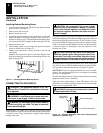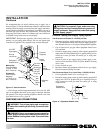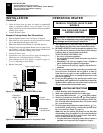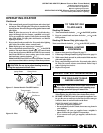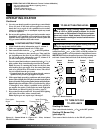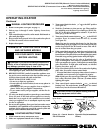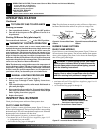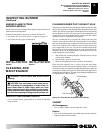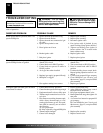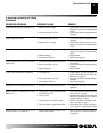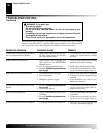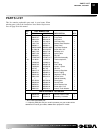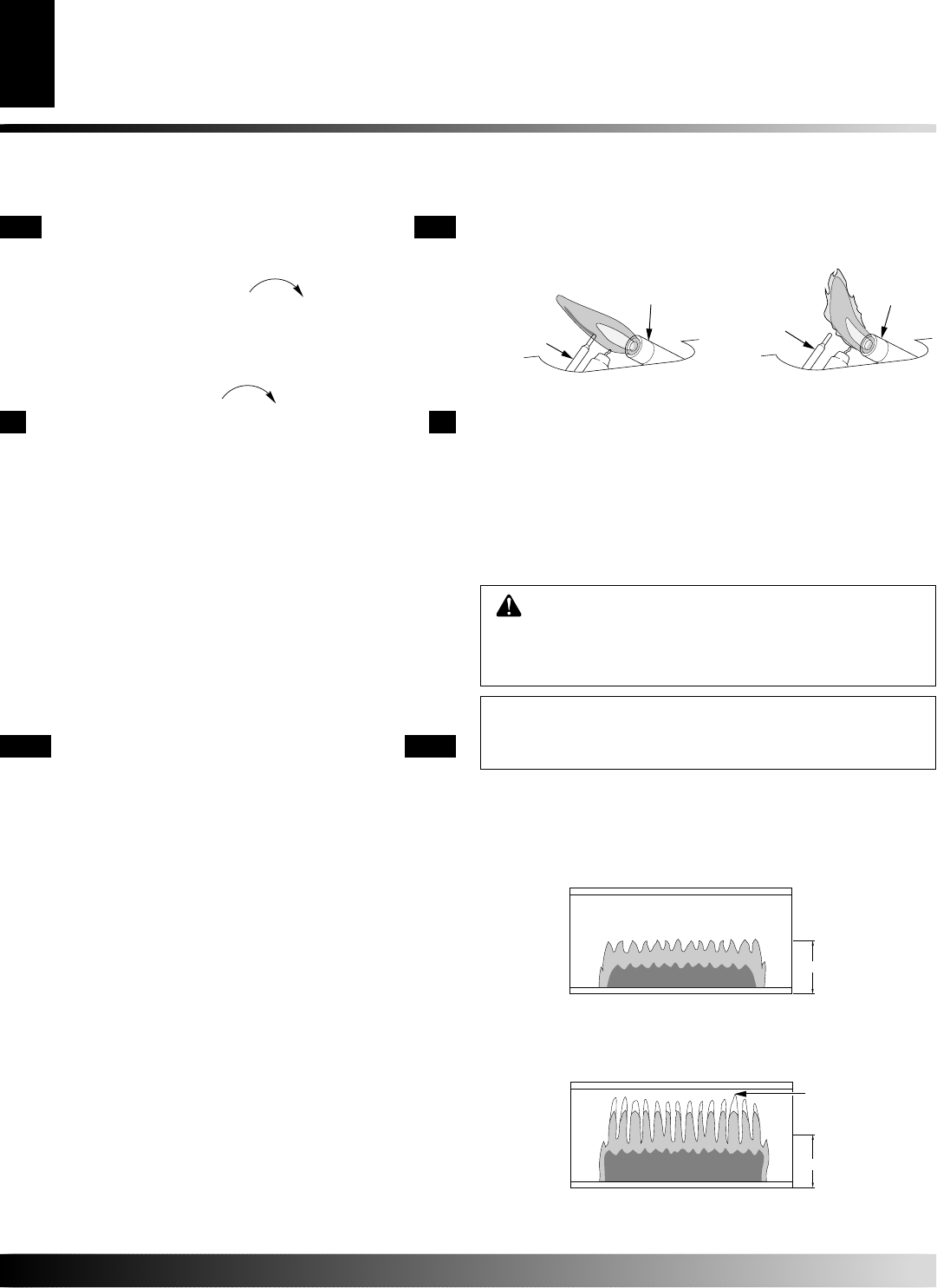
110720-01A
14
For more information, visit www.desatech.com
For more information, visit www.desatech.com
GRH/OV 007GOOD PILOT/LP
GRH/OV 008BAD PILOT/LP
1/2 GLASS HEIGHT
1/2 GLASS HEIGHT
Shutting Off Heater
1. Turn control knob clockwise
Clockwise
to the OFF position.
2. Turn off all electric power to the appliance if service is to
be performed.
Shutting Off Burner Only (pilot stays lit)
Turn control knob clockwise
Clockwise
to the PILOT position.
TO TURN OFF GAS TO APPLIANCE
1. Remove front panel (see Figure 10, page 7).
2. Follow steps 1 through 5 under Lighting Instructions,
page 13.
3. With control knob pressed in, strike match. Hold match to
pilot until pilot lights.
4. Keep control knob pressed in for 30 seconds after lighting
pilot. After 30 seconds, release control knob. Follow step 8
under Lighting Instructions, page 13.
5. Replace front panel.
The thermostatic control used on these models differs from
standard thermostats. Standard thermostats simply turn on and
off the burner. The thermostat used on this heater senses the
room temperature. The thermostat adjusts the amount of gas
flow to the burner. This increases or decreases the burner flame
height. At times the room may exceed the set temperature. If so,
the burner will shut off. The burner will cycle back on when room
temperature drops below the set temperature. The control knob
can be set to any heat level between HI and LO.
Note:
The thermostat sensing bulb measures the temperature of
air near the heater cabinet. This may not always agree with room
temperature (depending on housing construction, installation
location, room size, open air temperatures, etc.). Frequent use of
your heater will let you determine your own comfort levels.
OPERATING HEATER
Continued
THERMOSTAT CONTROL OPERATION
MANUAL LIGHTING PROCEDURE
INSPECTING BURNER
Check pilot flame pattern and burner flame pattern often.
PILOT FLAME PATTERN
Figure 24 shows a correct pilot flame pattern. Figure 25 shows an
incorrect pilot flame pattern. The incorrect pilot flame is not touching
the thermocouple. This will cause the thermocouple to cool. When the
thermocouple cools, the heater will shut down.
If pilot flame pattern is incorrect, as shown in Figure 25
• turn heater off (see To Turn Off Gas to Appliance, pages 11, 12
or 14 depending on your model)
• see Troubleshooting, pages 16 through 18
Figure 25 - Incorrect Pilot Flame
Pattern
Figure 24 - Correct Pilot Flame
Pattern
BURNER FLAME PATTERN
BLUE FLAME MODELS
Figure 26 shows a correct burner flame pattern. Figure 27 shows an
incorrect burner flame pattern. The incorrect burner flame pattern
shows yellow tipping of the flame. It also shows the flame higher
than 1/2 the glass panel height.
WARNING: If yellow tipping occurs, your heater
could produce increased levels of carbon monoxide.
If burner flame pattern shows yellow tipping, proceed
with the following instructions.
NOTICE: Do not mistake orange flames with yellow
tipping. Dust or other fine particles enter the heater
and burn causing brief patches of orange flame.
If burner flame pattern is incorrect, as shown in Figure 27
• turn heater off (see To Turn Off Gas to Appliance, page 11 or 14
depending on your model)
• see Troubleshooting, pages 16 through 18
Thermocouple
Pilot Burner
Thermocouple
Pilot
Burner
Figure 26 - Correct Burner Flame Pattern
Yellow
Tipping
Figure 27 - Incorrect Burner Flame Pattern
(Models VN600A and VP600A will be
lower due to lower input rating)
OPERATING HEATER (Thermostat Control Blue Flame and Infrared Models)
To Turn Off Gas To Appliance
Thermostat Control Operation
Manual Lighting Procedure
INSPECTING BURNER
Pilot Flame Pattern
Burner Flame Pattern Blue Flame Models
Note:
The pilot flame on natural gas units will have a slight curve,
but flame should be blue and have no yellow or orange color.





